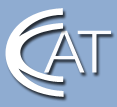Explore high-paying careers in clean, high-tech Connecticut manufacturing.

Educators: Externships
Work-based Learning Projects for the Classroom
Title: Application of Component Configuration Files
Name of NGM Educator: Rebecca Marra, CAD Dept. Head, Platt Technical High School |
Name of Host Company: Pennsylvania Globe |
Grade Level: 10th,11th, 12th grades |
Student Work Types: -Research and select components to use in this application. |
Task Abstract: |
Task Objectives:
|
Esssential Understandings/Questions:
|
Task Description: Upon completion of theory, students will research various industry catalogs and select appropriate parts for use in a configuration file. Students will develop a chart identifying the component features and dimensions to be used in the design table format. Students will Solid model the component with design intent in place allowing them to create a design table from the information they have obtained and determined necessary for a configuration file format. The file will be shared and tested by classmates to verify the effectiveness of the chosen format. The part will be applied to a drawing. The student will maintain a record of configuration formats created in their notebook. |
Resources Required: Understanding of blueprint reading, Ability to create a solid model, Solid Works software application, machinery handbook, electronic component catalogs |
Prior Learning Required: The students must have an understanding of software applications related to computer aided drafting & design along with blueprint reading. The ability to use and access Excel is required |
| Context within which work is produced:
There are workstations equipped with computers containing CAD software and access to a server for shared information and component formats. |
| Individual or Group Work: This project has the ability to be both an individual application and a group application. The resultant enables anyone to utilize the parts created for a multitude of purposes. |
| Special Needs: |
Educator Comments: I believe giving the students a real to life application is the most beneficial process. I am very grateful for the opportunity to become reacquainted with industry so I may provide a current project with updated software applications to my students. This was an invaluable experience and I would highly recommend participation to every instructor. |





